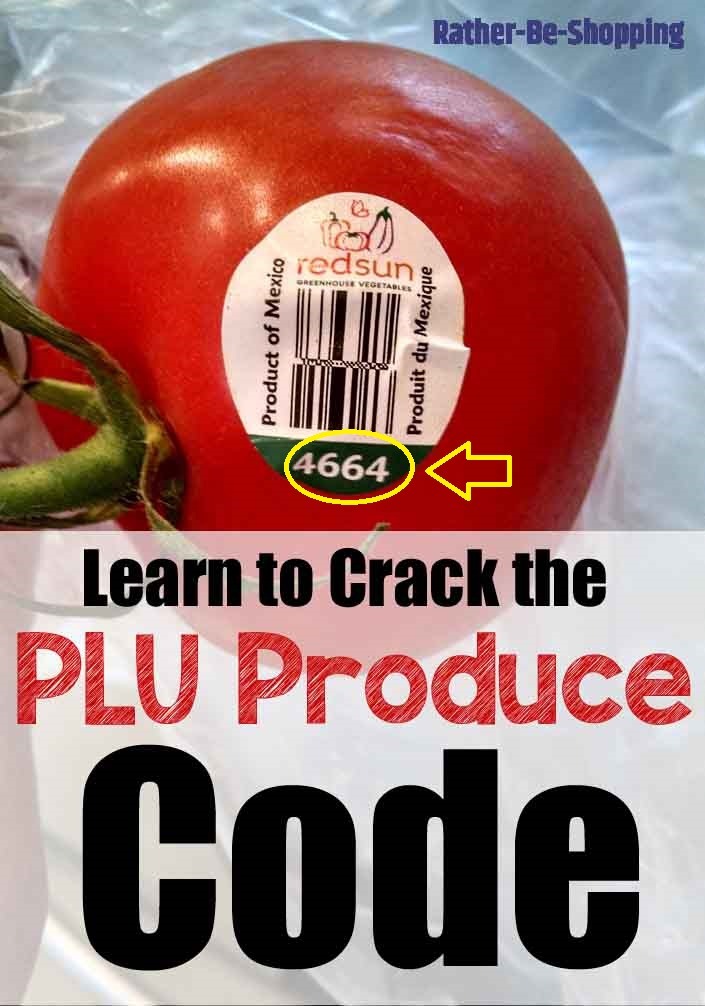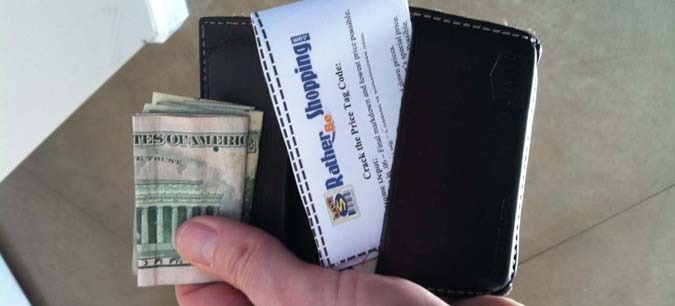9 Deadly Sins Every Bargain Hunter Must Avoid to Score the Best Deal
I have been throwing around a lot of advice lately about how to become a pro bargain hunter and make your money go as far as possible each month. Shopping hacks, frugal hacks, cracking the code, and the like. So I thought it was time to build a handy little resource article where I bring it all together for you with a cool little twist. Without further ado, I present the 9 deadliest sins that anyone who loves a bargain and hates paying full price has to avoid at all costs…
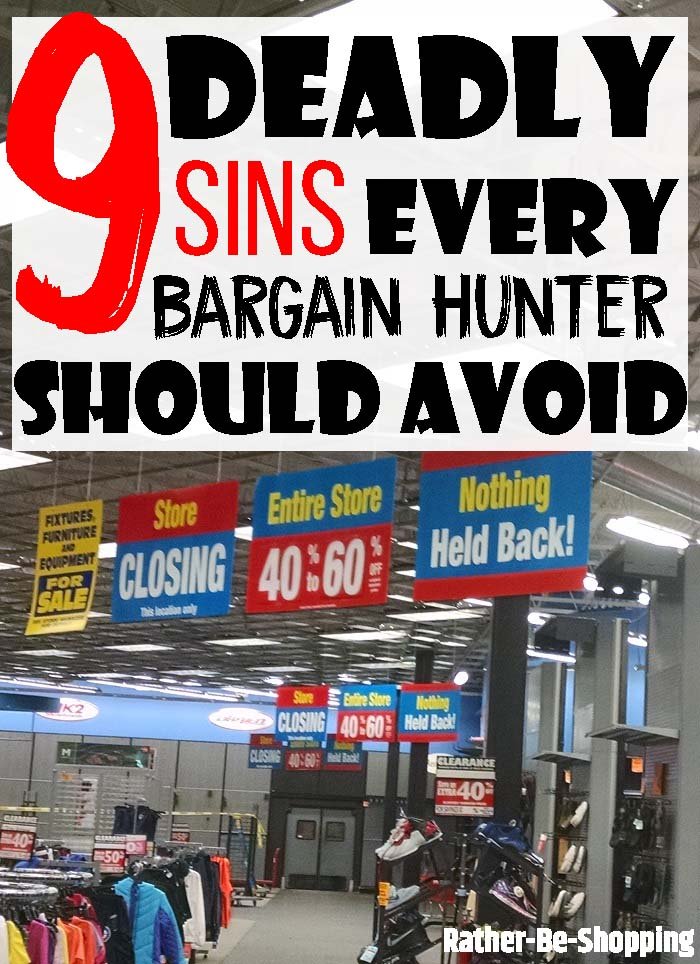
1. Assume the Price is Non-Negotiable
If you’re not negotiating the price, or at least considering it, you’re doing deadly sin #1 for bargain hunters.
This is especially true on larger purchases at stores like Home Depot, Lowe’s, Best Buy, and Cost Plus World Market.
The key to becoming a kick ass price negotiator is to start with the easy stuff. Look for items with a cosmetic problem like a small scratch or dent and hit up a store associate for a 15% or 20% off discount.
I use to work at The Home Depot and we were given the authority, with the approval of an assistant manager, to reduce the price for scratch and dents.
In the course of my employment, I must have asked a manager for 50 price reductions and I can only remember one time not being able to lower the price for the customer. Just do it, it works.
Also, another excellent way to bring your negotiating skills up to to snuff is to ask for a quantity discount.
Things like a discount for buying both a washer and dryer from Lowe’s or buying a new 55″ TV and Bluray player from Best Buy.
Just grab an associate and say, “I really want to walk out of here with both of these today, can you drop the price 10% if I buy both right now?” Chance of success…HIGH!
See Also: Talk Your Way to a Deal: How to Negotiate at These Major Retailers
2. Give Up Easily When Looking for a Coupon Code
So you’ve looked far and wide for a coupon code to finish off your online shopping and struck out at every turn.
A quasi bargain hunter would simply give up and accept full retail price.
Deadly sin #2 just took place right before your very eyes.
Here are 3 ways to find a coupon code and avoid this sin when all hope seems lost:
1. Ask Live Chat
I have talked about this before on my blog. Why? Because it flat out works.
If you can’t find a coupon code anywhere, and the online retailer you’re shopping at offers a ‘Live Chat’ feature, start a chat session and politely ask them for a free shipping code or a percent off coupon.
Retailers are keenly aware that shoppers that open a live chat session are close to purchasing and many are willing to offer an incentive to get you to finish the transaction.
2. Abandon Virtual Cart
This strategy is starting to pick up momentum and it involves logging into your store account, adding items to your virtual cart, them logging out.
Many retailers are then emailing out a coupon code to entice you back to the site to finish your purchase. It’s a bit passive aggressive, but for larger orders it’s definitely worth a shot.
3. Buy a Coupon Code
If you’re making a big purchase from stores like American Eagle, Best Buy, or Home Depot, and can’t find a coupon anywhere, considering buying an online coupon from a seller on eBay.com.
Most coupon codes are totally transferable and some that I’ve seen on eBay recently include a 25% off coupon code at American Eagle for a little over $1 and a 20% off coupon code at Macy’s.com for right around 2 bucks.
3. Ignore Social Media

If you’re not on social media outlets like Facebook or Twitter, and love a good bargain, you’re clearing committing deadly sin #3.
The majority of retailers these days use social media to share exclusive coupons and deals to help you never pay full price.
A great current example is the Lands’ End Facebook page which recently extended their “Friends & Family” 25% off coupon code for an extra day.
Who did they inform first of the extension? Yep, you guessed it, their Facebook followers.
If you weren’t following them you never would have known about the last chance extension to save 25% off your purchase.
See Also: 5 Genius Ways to Use Social Media to Save Money
4. Be An Introvert In-Store
If you walk into a big box store (or any store for that matter) and make a purchase, especially a large purchase, without opening your pie hole you’re committing deadly sin #4.
Instead, start chatting up employees about the specifics of the product.
Not only will you make a much more informed buying decision, but employees can tell you about things like when/if items go on sale, rebates available, and upcoming promotions.
As a former Home Depot employee, working in the paint department, we often had weekend sales where you could get $5 off every gallon of paint.
If it was a Thursday and some dude was buying 25 gallons of paint for his home I’d tell him to come back Saturday morning and save $125.
But if the dude was tight-lipped about what project he was working on, or I simply didn’t notice him, I’d have no way to drop him the money saving 411. Bottom-line: Don’t be an introvert.
5. Only Pay Attention to the Dollars Column of a Price Tag
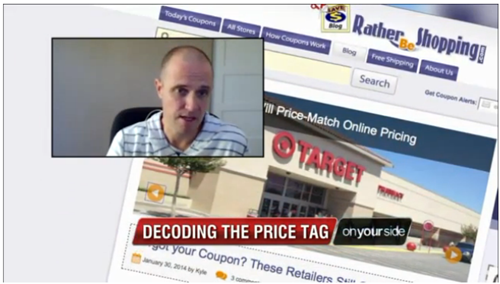
If you’re not learning to decode the price tag at many major retailers you’re clearly in violation of deadly sin #5.
Punishment? Paying full price even when the item might be marked down the very next day.
That is the exact case at your local’s Kohl’s if the digital price tag has a small “NM” in the top right-hand corner.
The “NM” stands for New Markdown and according to a Kohl’s employee that contacted me, it means the item will be marked down that night or the following morning. Wait to buy and snag a bargain.
6. Pay for Shipping
If you pay for shipping you’re committing deadly sin #6 and may very well be struck by lightning later today.
Free shipping coupons are pretty darn handy these days when shopping online and the truth of the matter is they are fairly prevalent.
Here are a few tips to find a free shipping coupon:
Google It! – The tried and true method of hitting up Google and typing in “Store Name Free Shipping Coupon” will typically yield the best results.
ShopRunner Free Trial – They offer a 30-day free trial which’ll get you free shipping on hundreds of brands.
This is a great trial to start right before the Christmas shopping season to maximize your savings.
Then cancel it before your trial ends and consider yourself a money saving genius.
Amazon Prime Free Trial – Another excellent free trial is the Amazon Prime version which gives you free 2-day shipping for 30 days at Amazon with no obligation.
7. Don’t Use a Cashback or Grocery Rebate App
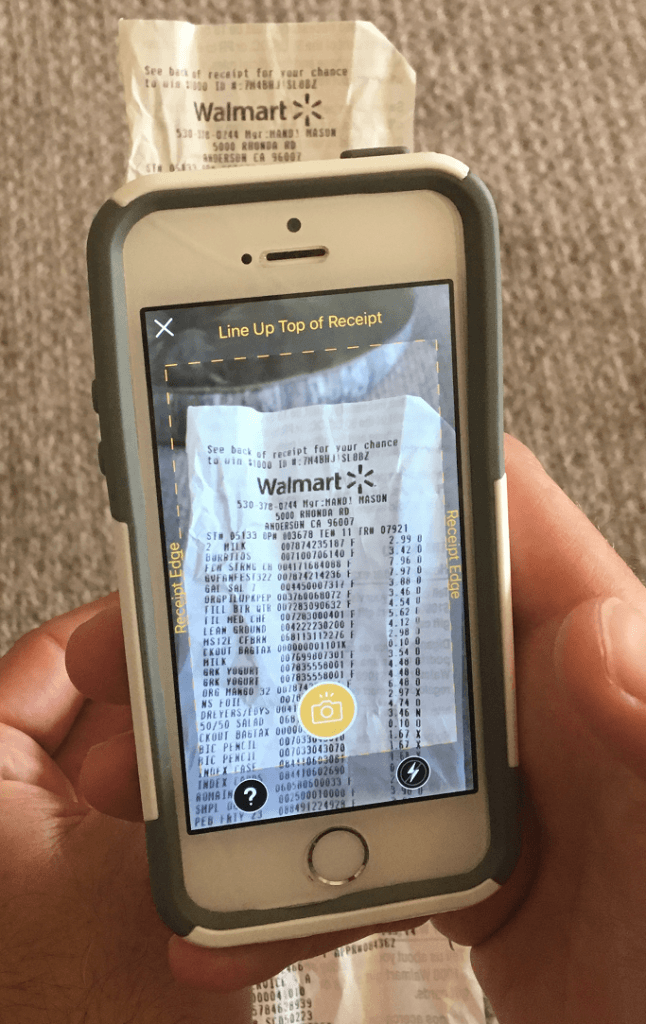
If you haven’t checked out the plethora of cashback websites and grocery rebate apps available today you’re committing deadly sin #7.
There is absolutely no reason to not be getting money back on ALL your purchases, here are a few of my favorites.
Ibotta – Download the Ibotta app and start earning money back on all the grocery purchases you’d be making anyways.
All you have to do is scan your receipt with the app and start earning on everyday essentials like milk, eggs, bananas, and cheese.
TopCashBack – Earn cashback on all your online purchases with TopCashBack.
Just start your shopping on their site, browser extension, or app and they’ll take care of the rest. Full Review.
Fetch – Fetch is so darn easy it’s nutty.
All you have to do is scan all your receipt with their app and earn money on your purchases. It really is that easy.
Be sure to use code RATHER when you sign-up and they’ll give you 2,000 free reward points.
Once you have some reward points built up in your account, you can redeem them for gift cards to a bunch of popular stores and restaurants. (Full Review)
See Also: The 12 Best Cashback Sites Worth Your Time (and Hacks to Maximize Your Savings)
8. Shop Hungry…or with Gas
If you’re shopping when hungry, or with gas so bad it’ll make your eyes water, you might want to reconsider as you’re in clear violation of deadly sin #8.
Everything falls apart in-store when your stomach or bowels are growling.
You never ask for help for obvious reasons, rarely negotiate the price, never do price comparisons on your phone, and the idea of looking for a coupon becomes laughable.
In short, you consider the selling price of an item what you HAVE to pay in order to get out of the store.
If either one of these maladies afflicts ya, just get out, drop everything and just get out.
Come back when you’re in a better position to make sure you are not getting ripped off.
Also, by all means never grocery shop when hungry or you’ll end up with more crappy food than you can shake a stale baguette at.
See Also: 24 Highly Clever Tricks to Save Money at the Grocery Store
9. Leave Your Smartphone in the Car
If you own a smartphone and you’re not using it as an ally in your bargain shopping you are guilty of deadly sin #9 and the punishment is a lifetime of paying full retail price.
But seriously, to be considered a true bargain hunter you have to be armed with the following FREE apps:
ShoppSavvy – Hands down the best app for quickly scanning the bar code of an item when in-store.
ShopSavvy will give you all the places in your town that sell the product (with the price) along with the best price to be found online.
Once you have all the information at your fingertips you can try and negotiate the price at the store you’re at, or if the savings is significant enough, drive down the street to save some money.
Amazon – (iOS, Android) – The Amazon app is very handy to have as it allows you to scan a product’s bar code and see instantly what Amazon sells it for.
It gives you an excellent barometer when deciphering over the price.
If you decide that Amazon is a better deal you can make the purchase directly through the app.
The product reviews are also quite handy when trying to figure out what brand or model to purchase.
Ask the Reader: Have you ever been guilty of committing any of these “bargain hunting” deadly sins? If so, what was the outcome: Lightning strike, plague of frogs, or a higher than expected credit card bill?

By Kyle James
Disclaimer: Some of the links in this article pay me a small fee if you click through and sign-up. But ALL opinions are MY OWN and I only recommend services that I use personally and have the upmost respect for.

